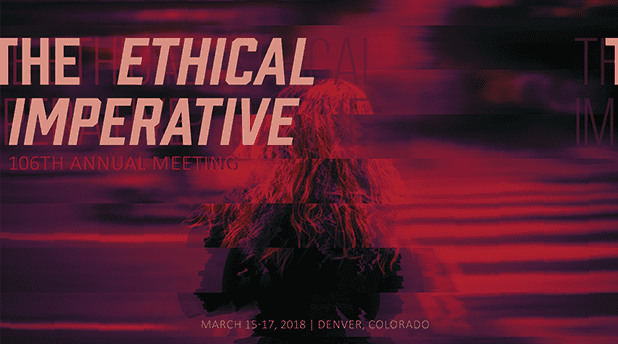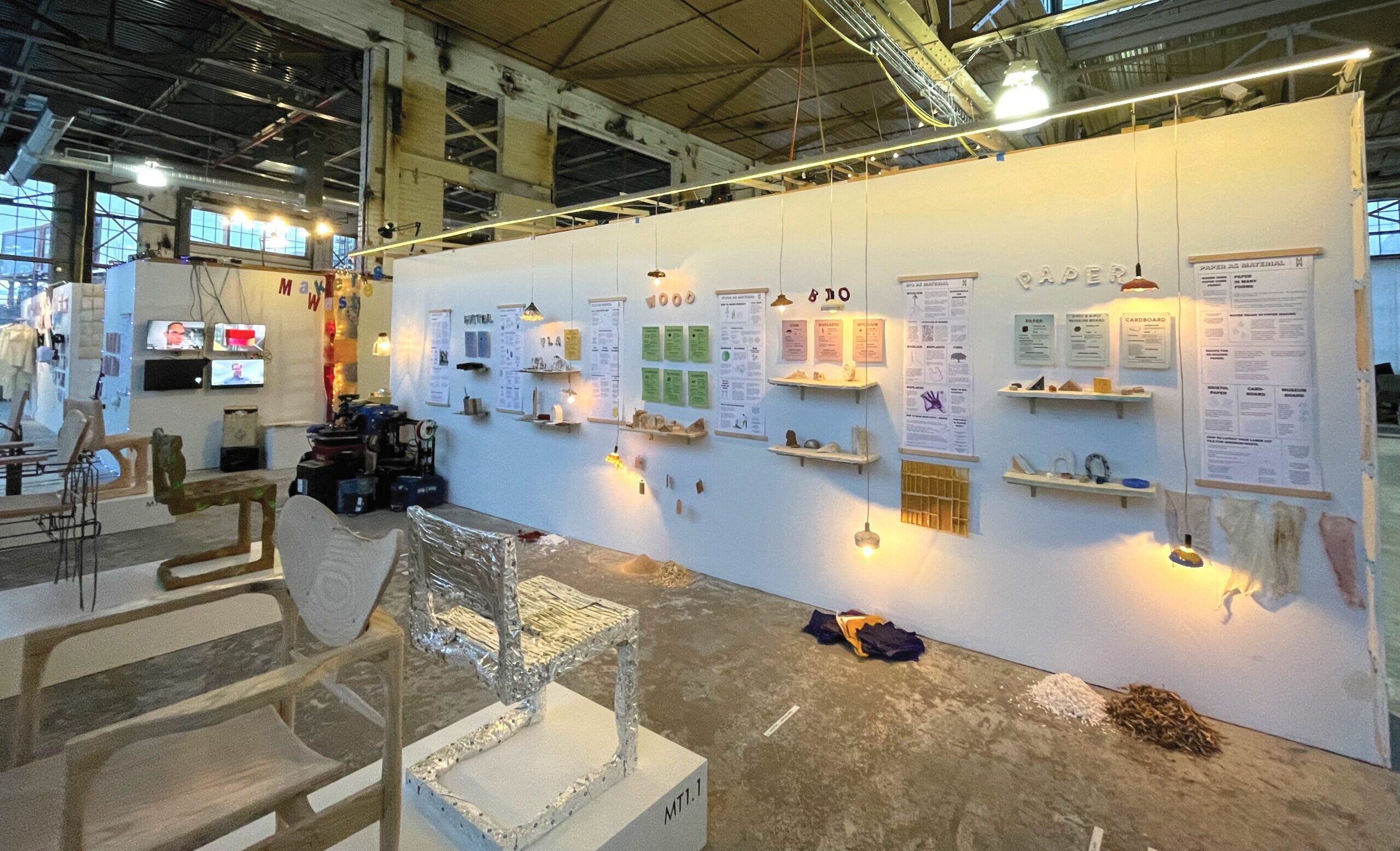Taubman Faculty Present Research and Work at 2018 ACSA Annual Meeting
Many Taubman College faculty and students will be representing University of Michigan and participating in the 106th annual meeting held by the Association of Collegiate Schools of Architecture (ACSA). This year’s conference, entitled Ethical Imperative, engages in ethical questions surrounding architecture and its material, cultural, and economic effects. The 2018 meeting is hosted by University of Colorado Denver and will take place March 15-18.
The following Taubman Faculty and Graduate Students will be participating:
Olaia Chivite Amigo and Michael Amidon
Amigo (M.Arch 2018) and Amidon (M.Arch 2017, MUD 2018) will present “Agriculture to Urbanization in Chicoloapan: The Importance of the Ejido in Housing Development,” a project exploring methods of land control, land division, and property right agreements in shaping housing and urban development in the peripheral municipalities of Mexico City. This research investigates the geographic, economic, and cultural history of ejidal lands and comments on its contribution to Mexico’s emergent totalizing urbanity.
This project will be presented in the Project Session: Housing on Thursday, March 15, 2018.
Jonathan Rule and Ana Morcillo Pallares
Rule and Pallares have been chosen to present “Emilio Perez Piñero and the Contemporary Lightweight Collective” and the associated project ‘Deploy.’ ‘Deploy’ is the result of an RTM grant that studied the work of Emilio Perez Pinero as a way to more fully understand this modular deployable system and the wide array of playful possibilities it provides. The resulting exploration aims to develop the interrelationship between parts, patterns and practices as agents that affect the compositional aesthetics as well as mechanical properties and possible spatial applications of these systems through a geometric, chromatic and multileveled structure. The structures field condition generates an artificial landscape that is simultaneously furniture and architecture, and establishes a framework to reevaluate the deployability of architecture for the necessary versatility of common space in our cities.
This project will be presented in the Project Session: History / Theory on Friday, March 16, 2018.
Hans Tursack
Lecturer Hans Tursack will present “Desert House,” a project which experiments with graphic problems, architectural surfaces, and tectonics. Tursack’s project description explains, “The study begins with a cube conceptualized as a flat, unfolded box, composed of six, two-dimensional surfaces. Each surface is structured with a grid, and understood as a graphic problem. Taking a cue from Swiss Modernist graphic design manuals, the surfaces of the box are cast as improvisatory games where particulate elements are distributed within the bounds of a sixteen or nine-square grid. Four drawings, nine elevation studies, two furniture elements and a short pamphlet construct a visual narrative around the design at different scales and levels of resolution.”
This project will be presented in the Project Session: Architecture in the Expanded Field, From Interiors to Landscape on Friday, March 16, 2018.
Ashley Bigham and Erik Herrmann
“Another Stack,” an experimental environment designed by Lecturers Ashley Bigham and Erik Hermann, is composed of flexible platforms for hosting events, lectures, workshops and everyday gathering in a large commons space. As a rapidly prototyped, inexpensive furnishing solution, the platforms are fabricated from SIPs panels, resulting in a solid, yet relatively lightweight system of solid construction that could be rapidly produced offsite. The project, which was constructed and used in Taubman College, suggests possibilities for informality, composition, and building materiality. The Situation Studio is taught collaboratively. In this presentation Bigham will share work from the 2017 studio which was taught in collaboration with Thom Moran and Ana Morcillo Pallarés. In previous versions of this studio, significant pedagogical contributions were made by many Taubman College faculty including Anya Sirota, Meredith Miller, and others.
This project will be presented in the Project Session: Architecture in the Expanded Field, From Interiors to Landscape on Friday, March 16, 2018.
Cyrus Peñarroyo
In his project “BLDG_DRWG,” Lecturer Cyrus Peñarroyo allows computerized and analog drawing methods as well as the attendant tools and conventions to be literalized in building. The description of the project explains, “Oscillating between analog methods (ink, paint, tape) and digital processes (scanning, photoshop filtering, milling), this project intensifies attributes of drawing otherwise lost in translation. A series of 1:1 investigations executed collectively harnesses the potency of these effects and uses them to reconstitute existing architectural conditions.”
This project will be presented in the Project Session: Media Investigations on Friday, March 16, 2018.
Erik Herrmann
Lecturer Erik Herrmann will present “Gridspace,” a representation course that investigates the continued relevance of the grid in contemporary image culture. Grids logically extend infinitely and this representation course leverages their inherent incompleteness in time and space through a series of drawing and modeling exercises of increasing scale and sophistication. The collection of student work analyzes, processes, and visualizes a building precedent, reimagining the role of the grid in each act of architecture. Ultimately, this body of work speculates on the alternative possibilities embedded in the very wefts and warps of the grid.
This project will be presented in the Project Session: Media Investigations on Friday, March 16, 2018.
Kasey Vliet, Peter von Buelow, Steven Mankouche
Lecturer in Architecture Kasey Vliet will present on behalf of a team co-led by Associate Professor Steven Mankouche, Professor Peter von Buelow and Vliet; and including Taubman College students Robert Allsop, Kevin Bukowski, Shaobo Niu, Omid Torghabehi and Benjamin Wichman, the project “LIMB: Rethinking Heavy Timber Joinery Through Analysis of Tree Crotches.” LIMB reconsiders historic heavy timber construction across cultures to develop new wood joinery methods by focusing on the natural occurrence of branch bifurcation in different wood species. This project was made possible by a 2017 Research Through Making grant from the Taubman College of Architecture and Urban Planning at the University of Michigan.
This project will be presented in the Project Session: Materials on Saturday, March 17, 2018.
Ellie Abrons, Thom Moran, Meredith Miller, and Adam Fure
Assistant professors Abrons, Moran, Miller, and Fure will present the project “Clastic Order,” a series of free-standing columns made by combining reclaimed construction debris with post-industrial plastic waste. Produced for the Designing Material Innovation exhibition at the California College of the Arts, the columns are the first full-scale demonstration of T+E+A+M’s ongoing research on the strategies and aesthetics of reassembly. While the classical orders of architecture established mathematical rules of proportion, spacing, and sequence of parts, “Clastic Order” suggests an approach to design based on material behavior under heat and gravity, as well as a product that reflects the composition of regional waste streams.
This project will be presented in the Project Session: Materials on Saturday, March 17, 2018.
Mireille Roddier
Mireille Roddier will participate in the JAE: “Preserve” special focus session with an invited presentation titled “Cycles of Radical Stasis,” to be held on Thursday, March 15th. On Saturday, March 17th, together with Syracuse faculty Britt Eversole, she will co-chair the Paper Session: By Any Means Necessary in which four presenters will critically examine the institutionalization of discourse on ethics.
More information on the 106th ACSA program can be found at:
http://www.acsa-arch.org/programs-events/conferences/annual-meeting/106th-annual-meeting





